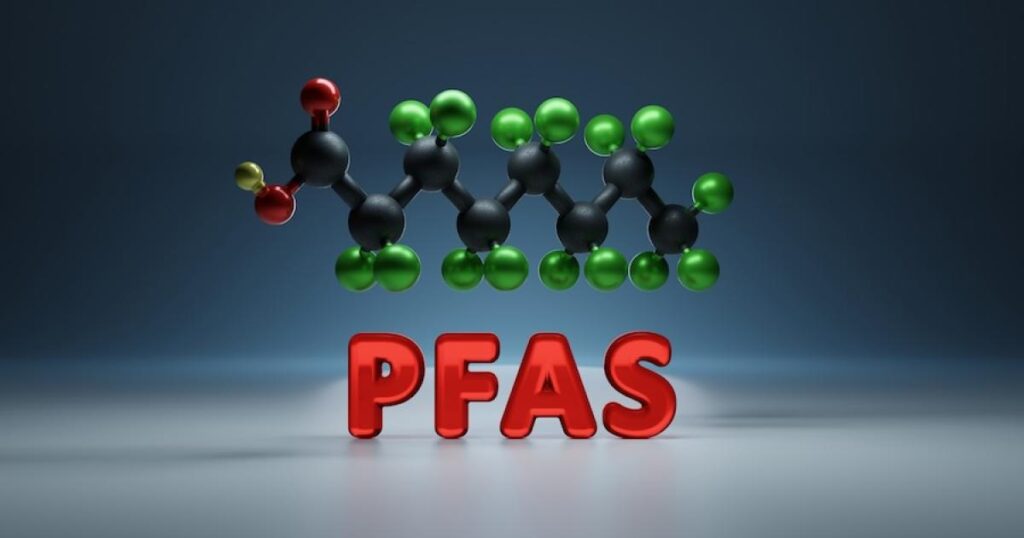EPA named 9 new ‘forever chemicals’ it wants out of supply chains
3 min read
The Environmental Protection Agency (EPA) recently proposed adding nine “forever chemicals” to its list of hazardous constituents under the Resource Conservation and Recovery Act (RCRA). To qualify for the list, chemicals must have proven “toxic, carcinogenic, mutagenic, or teratogenic effects on human life or other life forms,” according to the EPA’s website.
The chemicals are per- and polyfluoroalkyl substances (PFAS), a class used to make heat-, oil- and grease-resistant products. Existing in more than 12,000 forms, PFAS can be found on everything from menstrual products to mattress pads to wall paint. PFAS are also an environmental menace because they do not break down, can move through soils and groundwater, and accumulate in wildlife, eventually working their way up the food chain into humans.
Manufacturers who use PFAS were unsurprised by the EPA’s announcement, according to Kent Sorenson, chief technology officer at Allonia, a bioremediation company.
“The record rule was definitely expected,” said Sorenson, “highly anticipated in the marketplace both in terms of those who are cleaning up contaminated sites and dealing with the waste, but also from the users of those compounds that basically own that liability.”
But while the rule was expected, the specific chemicals chosen were unknown, causing backlogs on the ground.
“To some extent, [the unknown chemicals] were holding up site cleanups and evaluations, because it’s hard to do a proper evaluation when you don’t know for sure which PFAS compounds are going to be considered hazardous constituents,” said Sorenson.
Another important part of the announcement was the authority granted to both the EPA and the states to mandate chemical cleanup in the future.
“Thanks to strong partnerships with our co-regulators in the states, we will strengthen our ability to clean up contamination from PFAS, hold polluters accountable and advance public health protections,” said EPA administrator Michael Regan, in a statement.
Not everyone agrees with the EPA’s decision. “Grouping chemicals, including PFAS, into broad categories and creating one-size-fits-all policies is inefficient, costly and ineffective in achieving the intended environmental goals,” said Robert Helminiak, vice president of legal and government relations at the Society of Chemical Manufacturers & Affiliates, in an email to GreenBiz.
Helminiak stressed that the EPA’s ruling is “preventing critical chemistries that … have net positive environmental impacts from coming to market.”
Separately, a new rule added to the Toxic Substance Control Act (TSCA) in October requires new recordkeeping and reporting for manufacturers and importers of products containing PFAS. It mandates companies report PFAS uses, production volume, disposal, hazards and environmental effects in products that were sold commercially from 2011 onwards. The official language lists the industries most likely affected by this update, including construction, manufacturing, wholesale trade, retail trade and waste management and remediation services.
Allonia’s Sorenson envisions this could create new economic opportunities due to companies’ sudden need to access this information. Currently, no one is filling that need, he said.
“Manufacturers are looking for help from people to evaluate [the reporting process], and that’s a whole new market that has now opened up,” said Sorenson.
Companies that know or suspect they will be affected by the TSCA and RCRA rulings are advised to act quickly to minimize potential liability. In a commentary piece for Reuters, Miles Scully, a partner at Gordon Rees Scully Mansukhani LLP, counseled businesses to scrutinize their supply chains for PFAS, review contracts for language regarding PFAS, and look into PFAS alternatives.
Sorenson advised companies to invest in nascent but growing technologies that can tackle PFAS removal. He touted Allonia’s surface active foam fractionation (SAFF) system as “the most sustainable and robust technology” commercially available. SAFF leverages air bubbles to separate PFAS from water in small volumes, enabling the hazardous chemical to be retrieved and destroyed.





